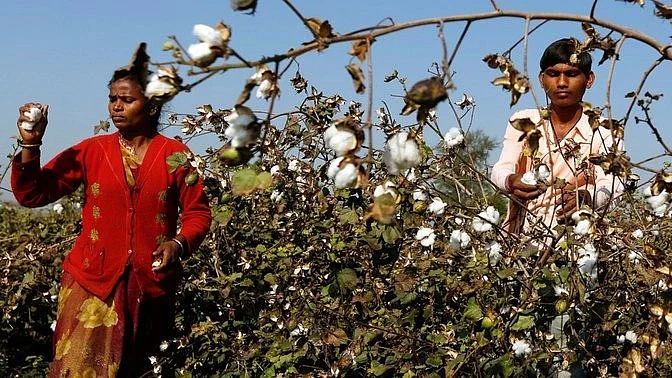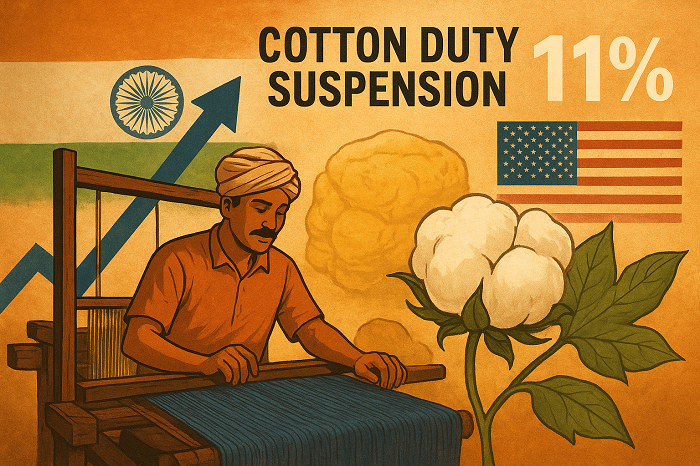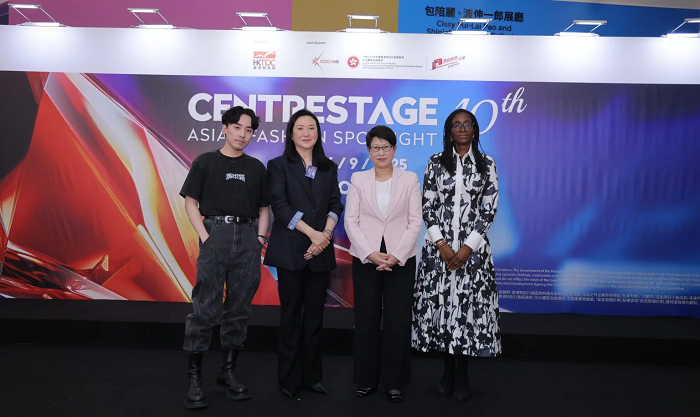Overtaking China, India is now the most dynamic market with a rapidly expanding economy and a consumption boom.
Conditions for retailers in India are favorable and will continue to provide strong fundamentals. GDP is forecast to grow 7.6 per cent in 2018, helping organised retail to double in size by 2020.
Relaxed rules for foreign direct investment in key sectors have improved the ease of doing business in India. Efforts to boost cashless payments and reform indirect taxation with a nationwide goods and services tax are also expected to accelerate adoption of modern retail. These are the findings of the Global Retail Development Index report.
In 2016, consumers showed increased interest in brands. Prominent international retailers entered the market including Armani Exchange, Cole Haan, Heatwave, Muji, Massimo Dutti, Kate Spade, and Neil Barrett.
Online retail is projected to grow 30 per cent annually, driven by high promotional activity and payment solutions such as cash on delivery. Lifestyle retailers such as Shoppers Stop are investing in omni-channel offerings. Two of the nation’s largest online retailers, Flipkart and Snapdeal, are considering a merger as investors look to lock in returns, cut losses, and focus on sustainable growth.
H&M opened 15 stores within two years of entering the market and German sports goods makers Puma and Adidas are looking for approval to operate fully owned retail stores and online portals.
According to the Egyptian Home Textiles Export Council (HTEC) compared to $443 million during the corresponding period of 2016 exports of home textiles rose 4.8 percent, reaching $664 million in the January-November 2017 period.
HTEC announced its intention to participate with 40 Egyptian companies in the Heimtextil International Trade Fair for home textiles which is set to be held in Frankfurt, Germany during January 9 to 12, 2018.
Chairman of HTEC mentioned that Egypt will also participate in the Carpet Domotex International exhibition, which is scheduled to be held in Hanover from January 13 to 17, 2018.
During the period of January-November 2017 Egyptian non-petroleum exports increased by 10 percent, registering $20 billion, against $18 billion in the same period of 2016.
Industry and Trade Minister, Tarek Kabil, stated that the exports could rise from $2 billion to $3 billion in 2017 year-on-year and that his ministry was aiming to cover 50 percent of the trade balance deficit by 2020, with more focus on raising exports.
Kabil assigned in November Egyptian export councils to prepare sectoral plans that will include ways to increase Egypt’s exports globally.
Companies are optimistic about growth improving worldwide. They are confident of rising trade between their own countries and the rest of the world.
Developed Asia is the cheeriest about the state of the global economy. Those in emerging economies are more optimistic about their countries’ trade prospects than their developed economy peers.
Expectations for companies’ growth and demand have also soared. Those in India are the most optimistic about the growth rates of their home economies increasing in the next six months.
Concern about equity bubbles is the most acute in India and in North America. Among other possible risks, overinflated asset prices are an increasingly worrisome threat to global growth.
This global survey on economic conditions was conducted by McKinsey.
Fifty-one per cent of respondents expect global conditions to improve in the next six months, compared with 42 per cent in the previous survey and 28 per cent who said so a year ago. When asked for the first time about the global economy’s growth rate, an even larger share— 72 per cent — expect it will increase over the next six months. By contrast, only 14 per cent predict the global growth rate will contract.
Among the risks to domestic growth companies cited domestic political conflicts and transitions of political leadership.
Finance minister Patrick Chinamasa recently in his 2018 National Budget statement stated that on cotton fabrics the duty will increase. It is proposed to increase customs duty on cotton fabric from 10 per cent to 30 per cent plus $2,50 per kilogramme, with effect from January 1, 2018.
The problem had been compounded by limited administrative capacity to identify the various types of fabrics, resulting in importers using the capacity gap at borders to declare imported products under tariff codes which attract lower rates of duty says the finance minister.
Chinamasa also stated that to combat the false declarations, in 2018 his ministry will introduce a fabric specification declaration form that will be used in the verification of fabrics. On importation of wine, there will also be suspension of excise duty on raw wine for approved manufacturers.
The year 2017 was a bad year for basic textiles in Pakistan as over a 100 mills closed down. They were unable to compete in the domestic or global markets. Their protectionist demands also adversely impacted the value-added sector.
In 2005 when the textile trade became quota-free creditable institutions declared Pakistan’s basic textiles as the most efficient in the world. The reason was that besides having competent skilled textile labor, its machines were new and better than its global competitors’. Even then the industry further upgraded its equipment in the next two years. That was the last technology upgrade of basic textiles in Pakistan. Twelve years onwards, the basic textile industry is in shambles operating on 10 to 12 year old technology.
New spinning machines compared with those used in Pakistan are speedier as they produce more yarn per hour. They consume 60 per cent less power and employ only one-third of the workforce. Those units that have managed to stay operational have either upgraded their technology or are running composite mills that convert the yarn into fabric. Some have gone further by producing garments from this fabric.
Nevertheless, in 2017 exports of knitwear and garments have registered a ten per cent increase.
As a member of the EU, the UK currently benefits from zero or low rate tariffs on various imports from trade deals that the EU has negotiated with countries. From the day after the UK leaves the EU, on March 30, 2019, it will no longer be covered by these international agreements, so imported goods will be subject to higher tariffs and potential customs barriers. For consumers this means higher prices.
New or higher tariffs inevitably mean consumers would face higher prices in their everyday shop, as staple products such as fruit, vegetables, fish, and clothing would be hardest hit. Tariff on clothing from Turkey, a major supplier to the UK, could rise from zero per cent to 12 per cent, and fish from Iceland from 3.4 per cent to eleven per cent. Price increases would add to the burden of hard-pressed consumers.
Now that an agreement has been reached to move the negotiations on to trade, the focus must be on securing the continuity of free trade with Europe, alongside replicating these existing agreements with countries outside of the EU. These are the crucial next steps that the UK needs to take to avoid a cliff-edge situation on Brexit day and to deliver a fair Brexit for consumers.
Pakistan’s textile exports for November ’17 increased by seven per cent as compared to the corresponding period last year.
The growth was led by the value added segment, which managed to counteract the effect of dampening cotton yarn and cotton cloth exports.
Knitwear exports increased by 18 per cent while readymade garments and bedwear posted 14 per cent and 12 per cent growth, respectively, on a year-on-year basis.
On the other hand, cotton yarn and cotton cloth continued their lackluster performance to post negative growth of eight per cent and seven per cent respectively on a month-on-month basis.
Even when it comes to value added segments such as readymade garments, global trends are shifting towards synthetic fibers whereas the share of cotton made products has been on a steady decline.
Players in the value added segments especially readymade garments face hurdles in remaining competitive in the rapidly transforming global markets.
Countries such as Vietnam and Bangladesh have focused on shifting their product mix in line with evolving textile consumer preferences, which have allowed them to increase their market share whereas Pakistan’s textile sector is struggling to cope. Anti-dumping and regulatory duties on raw materials used by the industry have resulted in increased cost of production for garment exporters.
Earnings at China’s industrial firms grew at their slowest pace in seven months in November, as demand and producer price gains eased in further confirmation of ebbing growth in the world’s second-largest economy.
The lower income underscores a delicate balancing act for authorities as they extend a campaign to reduce China’s reliance on credit-intensive investment without imperiling the economy.
Profits in November rose 14.9 per cent, the slowest monthly growth rate since April’s 14 per cent.
Earnings were pressured in November by a slower pace of price rises compared to previous months. November’s decline in producer price inflation to 5.8 per cent from 6.9 per cent in October was one of the biggest of the year.
Previous price increases were concentrated in upstream industries like coal and steel. Inflation in those areas is slowing, and the transmission of higher prices to downstream industries hasn’t been very strong, which hurts profit margins.
While the industrial sector has enjoyed a year-long construction boom that has fueled demand and prices for building materials in a boost to growth, a battle to clean toxic air and a crackdown on financial risks have started to drag on China’s economy.
Going fur free has become a major move among brands and retailers seeking to advance their sustainability agendas in 2017.
While animal welfare continues to become increasingly relevant among major apparel players, and consumers continue to demand more ethical shopping options, more industry members are opting to omit angora, exotic skins and fur from their products.
Gucci has omitted fur from its entire product value chain. Gucci will no longer use coyote, dog, fox or any other animals that are bred or caught for fur.
VF’s brands, including The North Face and Timberland, will no longer use angora, exotic leather or fur in their apparel and footwear products.
Environmental impact has been part of Yoox Net-a- Porter’s sustainability agenda, and the online fashion retailer’s new fur-free policy is accelerating this commitment. In June, Yoox Net-a- Porter adopted a fur-free policy that omits all accessories, apparel and footwear made from animal fur.
Michael Kors, which acquired Jimmy Choo this year, will curb the use of animal fur in its products. Any existing fur products manufactured will be phased out by the end of next December.
Alexa Chung, the UK model and designer known for her cozy sweaters, silky viscose dresses and vegan faux-fur outerwear, will not include angora or exotic skins in the collection’s apparel, accessories and footwear items.
Over the past five years employment generated by the Bangladesh garment sector has reduced drastically. One reason is the rapid automation of production compounded with the closure of factories that were found noncompliant with safety and other regulations. One machine replaces at least ten workers.
In 2013, there were some 44 lakh workers in the garment sector whereas currently there are only 38 lakh workers in this sector.
The trend is more pronounced in the woolens sector with sweater manufacturers increasingly opting for complete automation to cut down their cost of production. This substantially reduces their dependence on workers.
However the replacement of workers by machines or automation has by and large succeeded in displacing unskilled and semi-skilled workers. So far, factories have not retrenched their skilled work-force.
The other factor that influenced this shedding of workers is the immobility of labor. Several factories shifted to other areas subsequent to the Rana Plaza disaster. The workers expressed their inability to shift base and enter into the workforce of other sectors.
The drive for automation was also influenced by the manufacture of value-added garments like suits, blazers, lingerie and sportswear. Manufacturing high-end garments needs a level of sophistication that cannot be contributed by manual labor.
- 1
- 2
- 3
- 4
- 5
- 6
- 7
- 8
- 9
- 10
Cotton at a Crossroads: Geopolitics, trade shifts, and the global balancing act
The global cotton market in 2025 is passing through a period of shifting trade relationships, geopolitical tensions, and the rising... Read more
German textile and fashion industry grapples with persistent economic headwinds
The German textile and fashion industry continues to pass through a challenging economic situation. An anticipated recovery remains elusive amidst... Read more
French consumers blinded by fast fashion's allure: Study
A recent study on French consumer habits in the fashion industry throws up a concerning picture, suggesting that the allure... Read more
The great retail shift in the US, private labels emerge as new brand leaders
Once a humble alternative for budget-conscious shoppers, private labels often called store brands have stealthily evolved into a commanding force... Read more
Indian textile sector braces for increased Chinese imports amid diplomatic thaw
Following high-level diplomatic engagements between Indian External Affairs Minister S. Jaishankar and Chinese Foreign Minister Wang Yi, a new chapter... Read more
The stretch revolution, spandex redefining fabric weight and cost
The addition of spandex yarn in the textile industry has changed the sector in many ways. While traditional metrics like... Read more
Weaving Relief: India's cotton duty suspension a lifeline for textile industry a…
In a move that has sent a wave of optimism through its embattled textile sector, the Indian government has temporarily... Read more
From Paris to Panipat: Can India help solve Europe’s textile recycling crisis?
In the quiet warehouses of northern France, bales of discarded jeans, shirts, and dresses pile higher each week. For French... Read more
Centrestage celebrates a decade of global fashion in Hong Kong
The Hong Kong Trade Development Council (HKTDC) will host the 10th edition Asia’s premier fashion gala – Centrestage in partnership... Read more
India, China, and Brazil to lead global cotton market in 2025-26, says ICAC proj…
As per the August 2025 ‘Cotton This Month’ report by the International Cotton Advisory Committee (ICAC), global cotton production is... Read more












